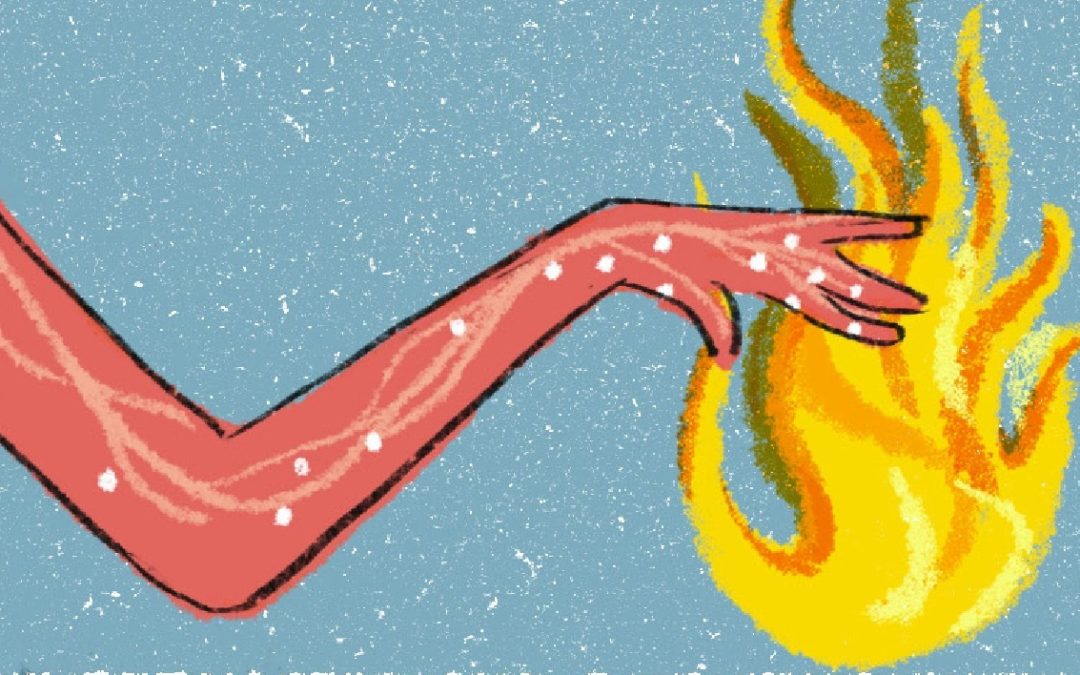Pain is strange in that it is non-linear and quickly becomes amplified over and above what is happening in the tissues.
A leading definition emerging from the latest research is that pain emerges when your brain decides something is unsafe. At the core of the experience of pain is a decision made inside you by the thread detection systems, the immune system, and by the brain. Pain is like a warning signal saying “something is not right here”, to tell you to do something different.
As Paul Ingraham states, in his article, Sensitization in Chronic Pain, ‘pain is, at a very fundamental level, all about your brain’s assessment of safety: unsafe things hurt. If your brain thinks you’re safe, pain goes down.’
It is clear that pain is a complex emotional event. New pain science is revealing that many things contribute to people’s experience of pain, beyond our physical structure and tissues, for example:
The story you have about the pain
When it comes to changing the way we perceive pain, we need can try to sell ourselves more beautiful, elegant, and accurate stories. For example, if you’ve been told you’re experiencing back pain because you’re old, or because your back is out of line, you could help the experiencing of pain to ease by reframing it as an alarm signal or danger message that is re-trainable.
The language you use to describe the pain
Avoid pain as an external thing, pain as violence and damage, pain as your fault (you do not deserve to suffer!) or pain as a battle. These metaphors rarely help.
An example of unhelpful language is ‘slipped discs’. They sound scary, but they can never actually happen. Instead, you could choose to use the metaphor of a disc under pressure, or something being squeezed, and then focus on reducing the pressure and how to unsqueeze.
Your capacity to feel your body
One of the biggest insights I’ve had from clinical experience is that most people are poor at feeling their body. I would go as far to say that most people are dissociated, most of the time.
When we take time to learn the subtle flows and tones inside your body, you’re more able to hear the body’s ‘good news’ rather than just the danger signals. The more good news, the better – it makes the brain feel safe, which turns down the volume on pain.
Your previous exposure to trauma
Trauma is also connected to what happens when your threat detection systems determine that you’re unsafe. Most of the pain literature I am aware of does not reference trauma. However there is an exploration of distorted body perception, which often follows the ‘freeze’ response to trauma, where we collapse, shutdown and dissociation.
In ‘A neurobiologist’s attempt to understand persistent pain’, Per Brodal discusses how working with this disturbed perception of our bodies can ease pain:
‘….persistent pain can be reduced by therapies that alter (normalize) the person’s perception of her own body. Indeed, patients with persistent pain often show evidence of disturbed ownership and body image’.
Your resources, relationships, faith and levels of stress
Pain is so much more than signals of danger from your tissues. It’s also more than blocked emotions and belief systems. In fact your experience of pain can depend on anything that can affect you. Modern pain science is revealing that pain is always complex, and it always involves the whole person, in their world.
The good news is that over time we can work to change habits and reflexes that contribute to pain. Anything that de-threatens the sensations you’re feeling and supports new possibilities will help break the pain habit.
Your tissues are not the problem, changing the habits of how you perceive is a good solution.
Join me for a free Pain is Really Strange webinar on March 30th
In the webinar we will:
- Explore the pain science I’ve discussed here, and much more.
- Discuss the complexity of pain and demystify some pain myths.
- Discover what we can do to change our pain experience.
- Learn how to explore our pain stories.
- Identify ways to work gently to find more safety in movement and feeling.
- Learn how to support others to find agency and choice in meeting their pain.
Pain is Really Strange – A free Webinar with Steve Haines
Time: 30 Mar 2022, 6.30 – 8.00pm UK timezone
Cost: Free
UPCOMING EVENTS:
FREE Webinars
Pain is Really Strange: 30 March
Anxiety is Really Strange: 27 April
Trauma is Really Strange: 26 May
Touch is Really Strange: 23 June
Biodynamic Craniosacral Therapy Intro Days
Intro to Relational Touch London: 22 May, 31 July
TRE Training (Online and In-Person)
TRE Intro Days Online: 31 March, 8 May, 20 June
TRE In-Person Certification Training *New dates*
Module 1 London: 23-24 April
Module 2 London: 25-26 June
Module 3 London: 17-18 Sep
TRE Online Certification Training
Module 1 Online: 21-22 June
Module 2 Online: 29-30 March and 4-5 Oct
Module 3 Online: 15-16 March and 13-14 Dec
TRE Advanced Training



Thank you deepely Steeve. Best wishes from Switzerland ..